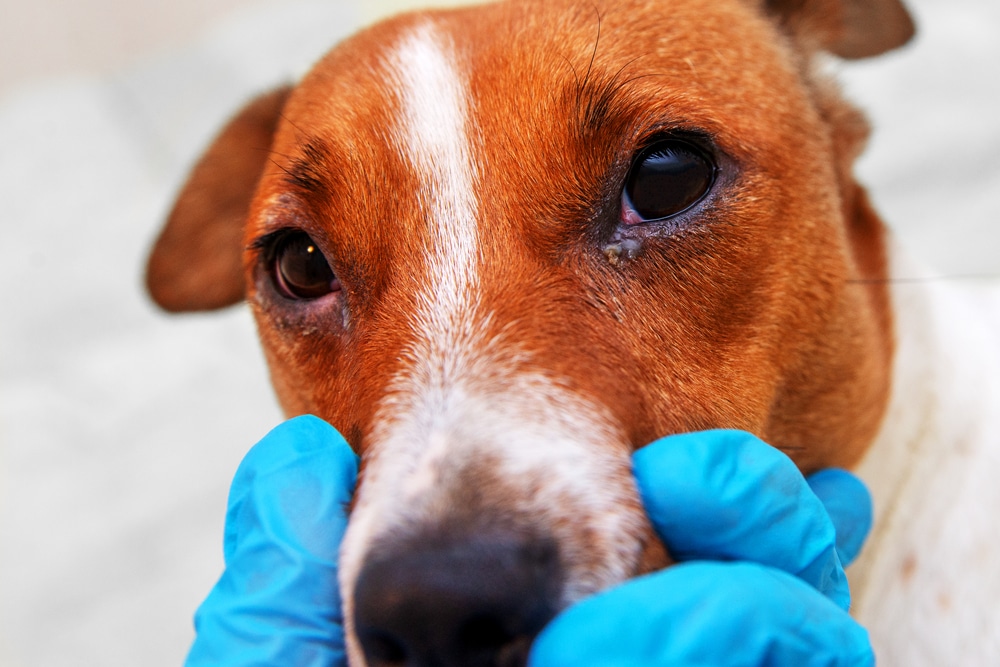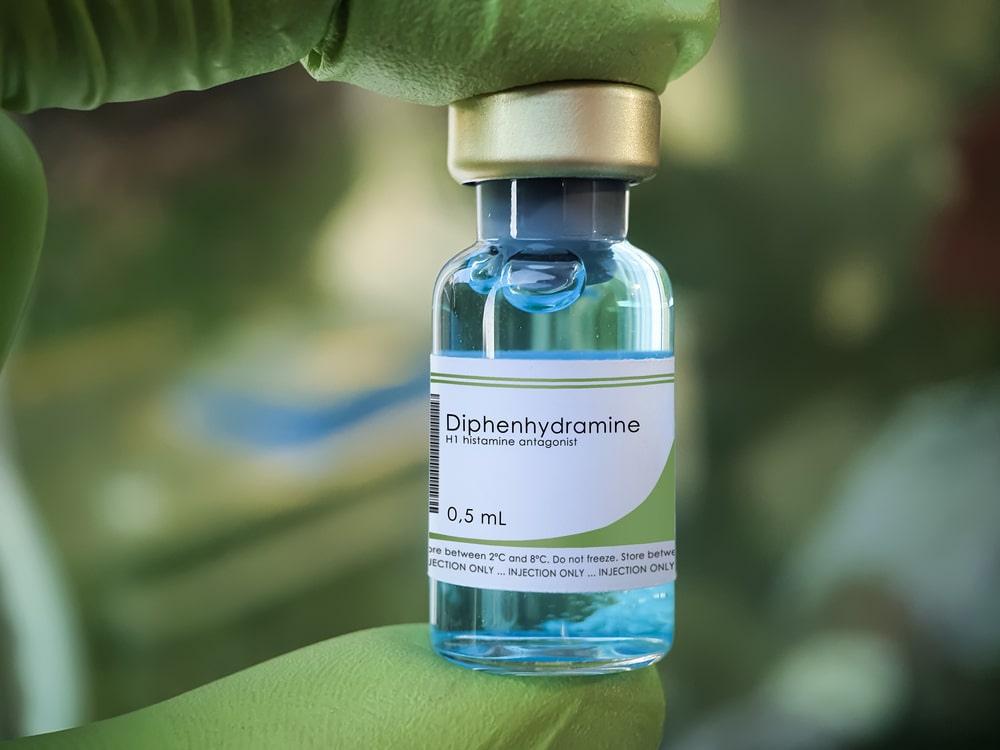Most owners who have dogs with allergies have heard of Benadryl, but what most owners don’t know is an answer to the question, “How much Benadryl can I give my dog?” The answer should be provided by your veterinarian, but it’s still a question worth exploring here too. So, how much Benadryl can you give to a dog?
How much Benadryl you give your dog should be decided by your veterinarian. While Benadryl is safe for dogs, your veterinarian has to decide the correct dose and whether or not it’s the right treatment for their issues. An overdose of Benadryl can be fatal to a dog.
Table of Contents
What is Benadryl?
Benadryl is an antihistamine, a medicine that is used to relieve symptoms of allergies. Its active ingredient is diphenhydramine.
Benadryl is an over-the-counter medicine, which means it can be bought without a prescription. However, you will want to consult with your veterinarian anyway because too big of a dose can harm your dog. Your dog could also be harmed if they’re taking other medications that shouldn’t be mixed with Benadryl.
The size of your dog also plays a big part in the dosage. Also, it’s possible for your dog to have health issues that look like allergies but they’re something else. So, it has to be up to the veterinarian to decide if Benadryl is the right medicine or not.
Please only make the decision to give Benadryl to your dog after you have met with your veterinarian.
What Does Benadryl Treat In A Dog?
Benadryl has a couple of uses for dogs. First, Benadryl can be used to prevent motion sickness and can cause mild sedation if your dog has a problem traveling in a car or plane or just does not react well to stress.
Benadryl can also calm allergic reactions that happen in your dog. Unfortunately, there are a lot of possible sources of these allergic reactions (more on this below).
What Causes Allergies In Dogs?

For starters, these allergic reactions can come from any plant, tree, or grass. Dogs need to go outside at least once or twice a day, so they can’t avoid these potential sources of allergies forever.
Also, insect stings or bites can cause an allergic reaction in your dog too. Other possible sources of allergies include food, dust mites, mold spores, or shed skin cells.
What Are The Allergy Symptoms?
All allergies have similar symptoms. They are:
- pruritus (itchy skin) that can be localized to one spot or can be all over the body
- rash
- cough
- sneezing
- wheezing
- runny discharge from the nose or eyes
What Should I Do If My Dog Has Allergy Symptoms?
Maybe your pet has some of the symptoms of possible allergies. You still need to go to the veterinarian though to make sure those symptoms are actually from allergies and that Benadryl is required to treat them.
Is Benadryl Safe For My Dog?
Benadryl is human medicine but it’s also safe for your pet. Even though it’s an over-the-counter antihistamine, you still need to consult your veterinarian about it though. They are going to decide whether Benadryl is the correct treatment for your dog’s issue and how much of a dose is safe.
If your dog has urinary retention, glaucoma, or hyperthyroidism, tell your veterinarian because Benadryl should not be given to dogs in this case. If you’re not sure if your dog has these conditions, ask your veterinarian.
It’s also possible, even though it sounds ridiculous, for your dog to have an allergic reaction to Benadryl. In the first hour after giving your dog Benadryl, keep an eye on them. If they start having an allergic reaction, contact your vet as soon as you can.
Also, there are some other medicines that are also antihistamines, but their commercial name is not Benadryl. You should not give them to your dog without consulting with your veterinarian. They may contain substances that are toxic to your dog.
What Are The Side Effects Of Benadryl?
Benadryl can cause the following side effects:
- sleepiness
- hypersalivation
- dry mouth
- rapid breathing
- difficulty breathing
- increased heart rate
These side effects are not life-threatening, but you need to know them so you can react appropriately. Contact your veterinarian or animal poison control if these symptoms arise.
What Happens If I Give My Dog Too Much Benadryl?
It is important to count the right dose for your dog because an overdose of diphenhydramine (Benadryl) can be serious. That is why your veterinarian needs to tell you how much Benadryl you can give to your dog.
If you give your dog too much Benadryl the following could happen:
- seizures
- respiratory failure
- coma
- death
Are There Alternatives To Benadryl?
If you are not sure that you need to give your dog Benadryl, or you don’t know how much Benadryl you can give your dog, you can always try a natural alternative first. It’s still a good idea to consult with your veterinarian first before trying this route too.
There are natural allergy supplements that support the immune system and your dog’s health though. They contain colostrum, which is antibody-rich and comes from the mammal glands of animals in the first days of breastfeeding. That is the way how mothers protect their puppies from some diseases. If these supplements don’t solve the problem, don’t panic because they can’t harm your dog.
Also, CBD (cannabidiol) can be an alternative. It comes from agricultural hemp and may help with the itchy and dry skin of your dog. CBD can be used for motion sickness if your pet has it, so traveling won’t be difficult for your pet. Besides tablets, CBD comes in oils, lotion, and balm, so you can topically treat your dog, but if there is a rush or damaged skin you should not use this form of CBD.
How Else Can I Help My Dog With Allergies?
Depending on what allergen is making problems for your pet, you can also try to limit the exposure of your pet to the allergen. It’s not always possible but you can try.
If an allergen is from food, you can try a different brand or recipe. A lot of dogs start to be allergic to food with chicken taste, so you can buy your dog food with beef taste or lamb taste.
If an allergen is from inside of the home, you can clean your home more thoroughly. Sometimes bathing your dog with a shampoo for allergies can help, but you need to consult with your veterinarian because that is a medicinal shampoo. How much shampoo, and how often you can bathe your pet is also a question for your veterinarian.
Conclusion: How Much Benadryl Can I Give My Dog?
Because you love your dog and don’t want to hurt it, please consult with your veterinarian about any of these decisions. Ask them as many questions as you can too whether that’s, “How much Benadryl can I give my dog?” or another question. Allergies are something that your dog can live with, and your veterinarian knows the best way to do that.
So, what sorts of allergies does your dog have? Let us know what they are and how you’ve treated them in the past in the comments below!
